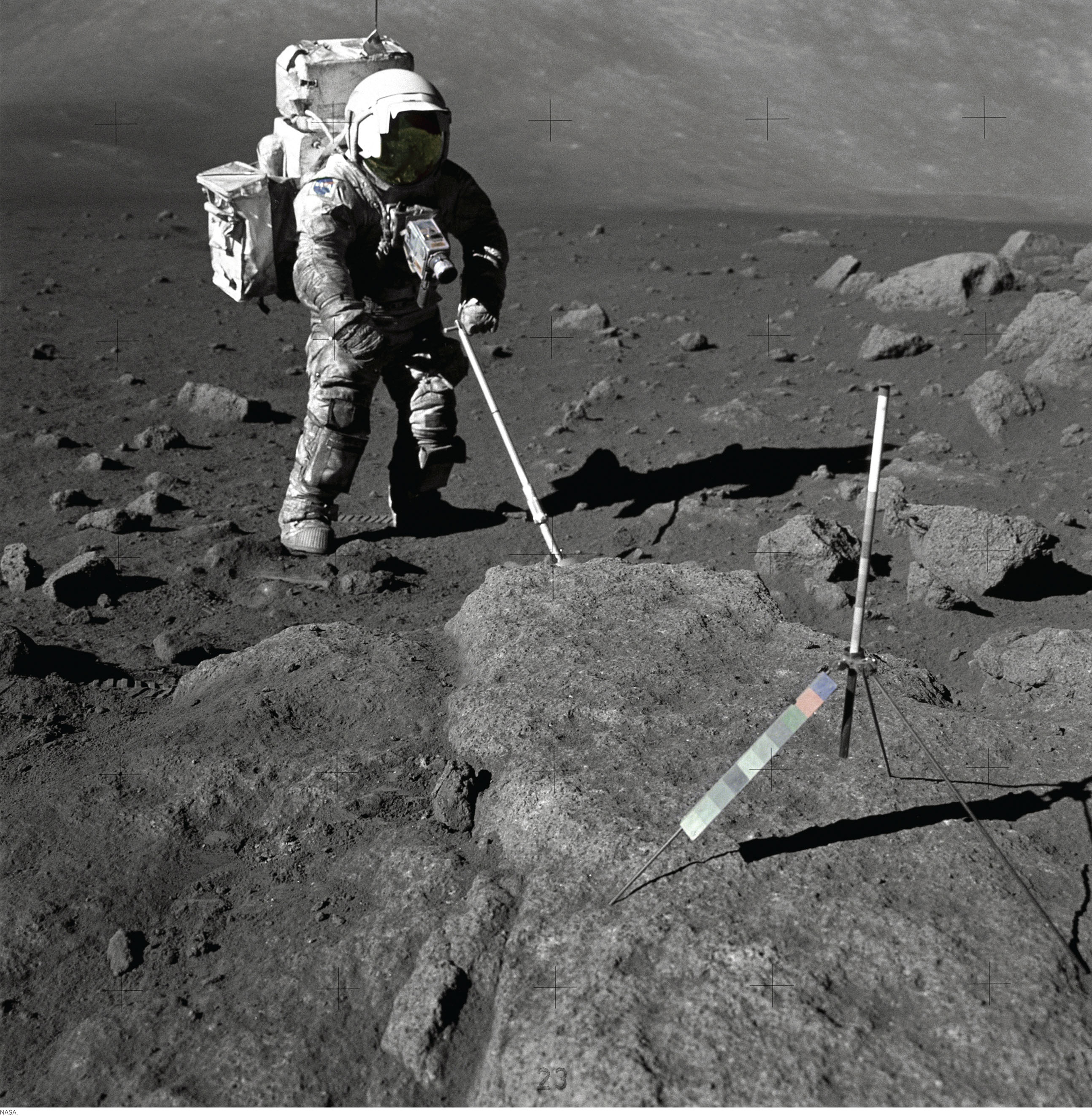220

EARLY HISTORY OF THE TERRESTRIAL PLANETS
 Origin of the Solar System
Origin of the Solar System Early Earth: Formation of a Layered Planet
Early Earth: Formation of a Layered Planet Diversity of the Planets
Diversity of the Planets What’s in a Face? The Age and Complexion of Planetary Surfaces
What’s in a Face? The Age and Complexion of Planetary Surfaces Mars Rocks!
Mars Rocks! Exploring the Solar System and Beyond
Exploring the Solar System and Beyond
221
IN A SERIES OF SIX LANDINGS FROM 1969 THROUGH 1972, the astronauts of the Apollo missions explored the surface of the Moon. These astronauts, trained in geology, took photographs, mapped outcrops, conducted experiments, and collected dust and rock samples for analysis back on Earth. This unprecedented achievement was possible only through the close collaboration of scientists, engineers, and the funding agencies that recognized the importance of basic research in developing new technologies. Perhaps the most important ingredient of all was the irrepressible drive, inherent in all human beings, to explore the unknown. The desire to explore our universe has existed for as long as humans have been able to think. Edwin Powell Hubble best captured the spirit of space exploration when he modestly noted, “Equipped with his five senses, man explores the universe around him and calls the adventure science.”
The modern era of space exploration began in the early 1900s when a handful of scientists with a yearning to escape the confines of Earth’s gravity began to develop the first generation of rockets. By the late 1920s, these backyard rockets, powered by liquid propellants, were ready for use. Developments occurred rapidly over the next few decades, culminating in the fevered cold-war race between the United States and the Soviet Union to put the first rocket into space, the first satellite into Earth orbit, the first human on the Moon, and the first robot on Mars. By the mid-1970s—50 years after the first liquid-fueled rockets were invented—all of these goals had been achieved.
222
The scientific dividends of space exploration have been tremendous. The age of the solar system, evidence for liquid water on early Mars, and the thick atmosphere of Venus were all revealed by the mid-1970s. Since that time, we have carried on our exploration of the solar system and beyond. Using instruments in Earth orbit and on spacecraft sent to the far limits of our solar system, we have obtained a much better view of what, literally, is way out there! Of all these instruments, none has produced such visually spectacular images of deep space as the Hubble Space Telescope, named for Edwin Powell Hubble. Not since Galileo turned his telescope toward the heavens in 1609 has any instrument so changed our understanding of the universe.
The crater-marked surfaces of the Moon and our neighboring planets, and the occasional meteorite that crashes through Earth’s atmosphere, remind us of a disorganized, chaotic time when the solar system was young and Earth’s environment was much less hospitable. How did the solar system become the well-ordered place it is today, with planets moving in stately orbits around the Sun? How did Earth’s rocky mass come together and differentiate into a core, mantle, and crust? Why does Earth’s surface, with its blue oceans and wandering continents, look so different from those of its planetary neighbors? Geologists can draw from many lines of evidence to answer these questions. The rocks of continents preserve a record of geologic processes more than 4 billion years old, and even more ancient materials have been collected from meteorites. And now we can reach beyond Earth for the answers.
In this chapter, we will explore the solar system not only outward through the vast reaches of interplanetary space, but also backward in time to its earliest history. We will see how Earth and the other planets formed around the Sun and differentiated into layered bodies. We will compare the geologic processes that have shaped Earth with those that formed Mercury, Mars, Venus, and the Moon, and we will see how exploration of the solar system by spacecraft might answer fundamental questions about the development of our planet and the life it contains.